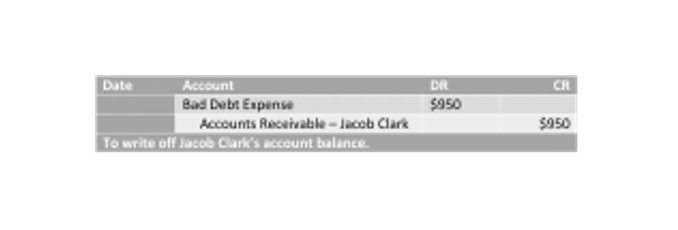
It may be reasonable to use the general principle of “substance Accounts Receivable Outsourcing over form” and treat these as costs included in the general framework of lease termination payments. The court applied its lease termination analysis to the payments without regard to the contract language or the specific purpose for which the payments were designated. The court in Handlery also considered Wells Fargo Bank & Union Trust Co., 163 F.2d 521 (9th Cir. 1947), which involved a payment made for the lessor to enter into a new lease. In this case, the lessor made a termination payment to its original lessee to enter a lease with a new lessee. The new lessee paid larger lease payments to the lessor for the first 12 months of the new lease that were tied to the lessor’s cost of terminating the old lease.
- The asset, which was likely classified separately as “property on operating lease,” is reclassified back to its standard fixed asset category, such as Property, Plant, and Equipment.
- Companies should consider the financial impact of lease termination decisions under ASC 842.
- The IRS could argue that the leases have an indefinite duration and the payment may not be amortized at all.
- If ABC decides to terminate the lease early, it must adjust the lease liability and right-of-use asset accordingly, which could result in a significant increase in expenses.
- However, under ASC 842, ABC must recognize a lease liability and a right-of-use asset on its balance sheet for the remaining term of the lease.
Lease Termination Accounting under FASB, IFRS, and GASB: Options to Terminate, Costs, and More

The IASB decided that under IFRS 16, a reduction in the lease term does warrant a gain/loss calculation. To illustrate, consider a lessor who terminates an operating lease for a building and receives a $50,000 termination fee. At the termination date, there is a $5,000 deferred rent revenue balance and $2,000 in unamortized initial direct costs. The journal entry would involve debiting Cash for $50,000, debiting Deferred Rent Revenue for $5,000, and debiting an expense account for the $2,000 write-off. A credit to a gain on lease termination account for $57,000 would balance the entry, and the underlying building asset would then be reclassified.
Required Disclosures for Lease Terminations
- According to the original terms of the lease, the balance of the lease liability and ROU asset at the end of 2025 are $27,089,980 and $24,630,474, respectively.
- The ROU asset represents the lessee’s right to use the underlying asset, while the lease liability is the obligation to make lease payments.
- As of May 31, 2025 the remaining lease liability and right-of-use asset were $6,201,663.09 and $6,043,626.29 respectively.
- Sec. 1.167(a)-3 for “rules relating to amortization of certain intangibles” (Regs. Sec. 1.263(a)-4(m)).
- When a lease is terminated, whether due to the end of the lease term, early termination by the lessee, or a breach of contract by the lessor, it necessitates adjustments in the accounting books.
A more reasonable approach may be to try to use experience to determine the average duration of the eviction process and amortize the payment over this period. When an operating lease is terminated, the lessor’s primary accounting action involves the underlying asset. The asset, which was likely classified separately as “property on operating lease,” is reclassified back to its standard fixed asset category, such as Property, Plant, and Equipment. A notable aspect of this reclassification is that the carrying amount of the asset itself does not change at the moment of termination. To account for the partial termination of their headquarters lease XYZ Shipping first calculated the net change in their lease liability. Based on the revised information in the amended lease and using their new incremental https://www.bookstime.com/ borrowing rate of 3.75%, Shipping XYZ calculated their new lease liability to be $4,310,323.30 (decrease of $1,891,339.79).

Try LeaseGuru for free for ASC 842 & IFRS 16 compliance

This section delves into various case studies that exemplify successful accounting for lease termination lessor lease termination scenarios. These cases provide valuable insights from the perspectives of lessees, lessors, and financial analysts, illustrating the multifaceted nature of lease agreements and their dissolution. By examining these real-world examples, we can glean lessons on the strategic approaches and best practices that can lead to a favorable outcome for all parties involved. Understanding the legal framework of lease termination requires careful analysis of the lease agreement, awareness of statutory rights, and a clear grasp of the financial and legal consequences. By considering these factors from multiple perspectives, one can better prepare for the complexities of lease termination in operating lease accounting. When there is a reduction in the lease term, the lessee remeasures the lease liability based on the future lease payments; the balancing journal entry goes to the right of use asset.

These considerations can significantly impact the financial statements of both parties and require careful analysis to ensure compliance with tax laws and accounting standards. From the perspective of the lessee, the termination of a lease may result in a gain or loss, depending on the terms of the termination and the carrying amount of the right-of-use asset. For the lessor, the termination could lead to a recapture of tax benefits previously claimed, among other implications. The termination of an operating lease can have significant implications for a company’s financial statements and ratios, which in turn can affect stakeholders’ perception and the company’s financial health. When a lease is terminated, whether due to the end of the lease term, early termination by the lessee, or a breach of contract by the lessor, it necessitates adjustments in the accounting books.
- For example, if a lessee gives up 25% of its leased office space, the ROU asset’s carrying amount is reduced by 25%.
- Given the abundance of partial terminations in today’s economy it’s important to understand the accounting implications of such transactions.
- As you can see above both approaches result in similar end values for the lease liability and right-of-use asset but the method to arrive at the values is slightly different.
- This process removes assets and liabilities that are no longer relevant once the contract is voided.
